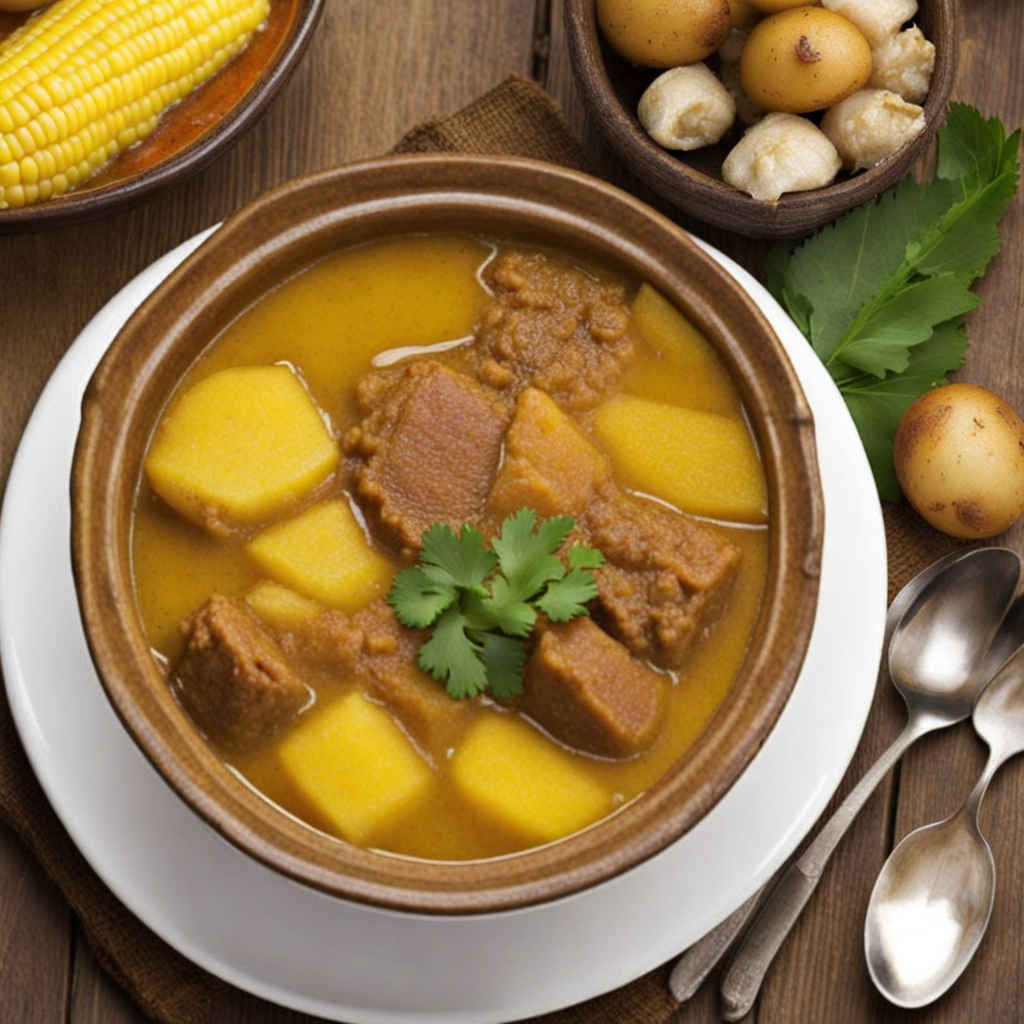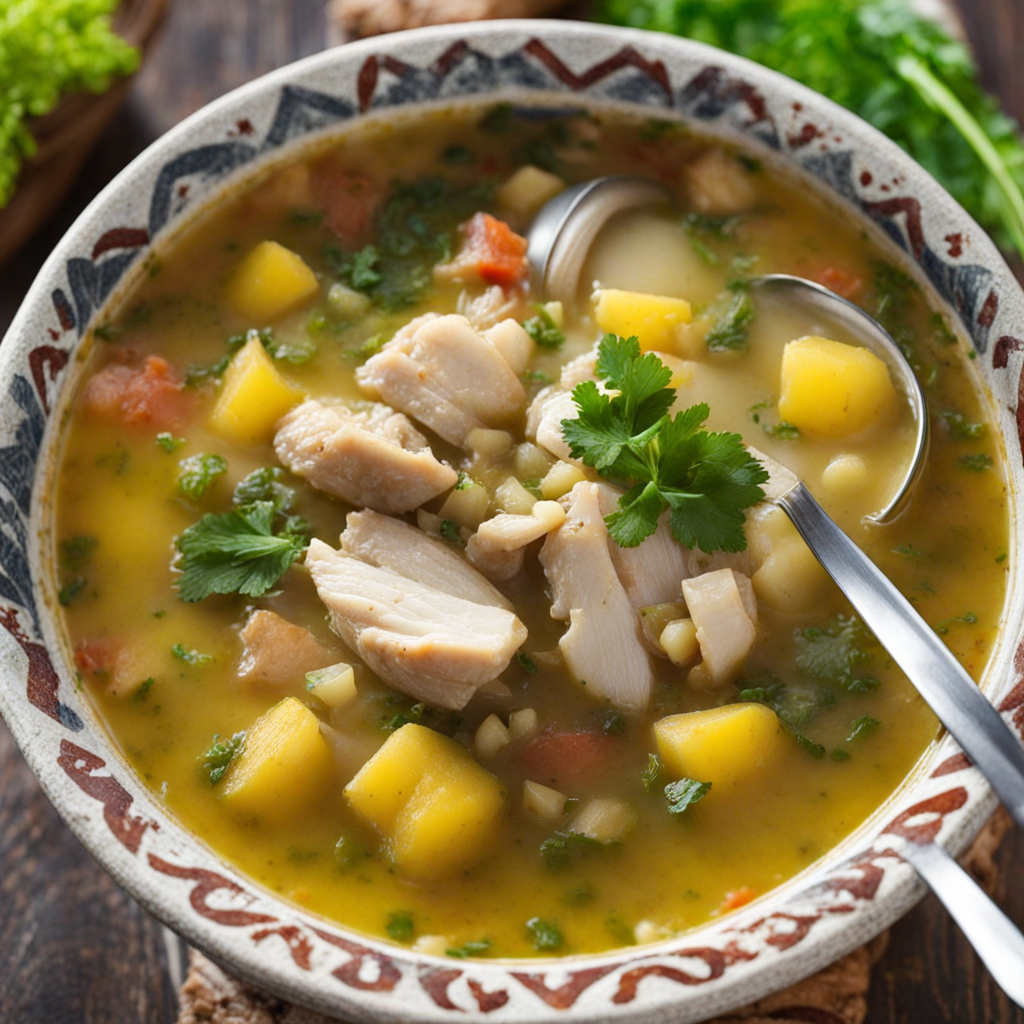Empanadas
Empanadas are a beloved Colombian delicacy that encapsulates the country's rich culinary heritage. These savory pastries are typically made from a cornmeal or wheat flour dough, which is rolled out and filled with a variety of ingredients. The fillings can range from seasoned ground beef, chicken, or pork to vibrant vegetarian options like cheese, potatoes, or mushrooms. Each region in Colombia has its unique twist on empanadas, often influenced by local ingredients and traditions, making them a versatile and exciting dish to explore. Once filled, the dough is folded over, creating a half-moon shape, and then sealed by crimping the edges. The empanadas are then deep-fried until they achieve a golden-brown crispiness on the outside, while the inside remains warm and flavorful. The contrast of the crunchy exterior with the soft, savory filling is what makes every bite an irresistible experience. Traditionally, they are served with a side of ají, a spicy Colombian salsa made from chopped tomatoes, onions, and cilantro, adding a delightful kick to each mouthful. Empanadas are not just a snack; they can be enjoyed at any time of day, whether as a hearty breakfast, a midday treat, or an appetizer at a gathering. They embody the spirit of Colombian street food culture, often found at bustling markets and roadside stalls, where vendors proudly serve them fresh and hot. For anyone eager to discover new tastes, biting into a Colombian empanada will transport you into a world of flavor, texture, and warmth, making it a must-try on your culinary journey.
How It Became This Dish
The History of Empanadas in Colombia Empanadas are a beloved staple in Colombian cuisine, celebrated for their delicious fillings encased in golden, flaky dough. These portable pastries have a rich and complex history that intertwines with the cultural tapestry of Colombia and its diverse influences. To understand the significance of empanadas in Colombian culture, one must explore their origins, their evolution over time, and the way they reflect the country’s regional identities. #### Origins The term "empanada" derives from the Spanish verb "empanar," which means "to coat with bread." This culinary practice is thought to have originated in the Iberian Peninsula, particularly in Spain, where the concept of enclosing various fillings in dough dates back to the Middle Ages. The earliest known recipes for empanadas can be traced to the 15th century, with the introduction of the dish linked to the Moorish influence on Spanish cuisine. These early versions were filled with meats, vegetables, and spices, reflecting the agricultural bounty of the region. With the age of exploration and colonization in the late 15th and early 16th centuries, the Spanish brought their culinary traditions to the New World. As they settled in various parts of South America, including present-day Colombia, empanadas found a new home. The indigenous populations of Colombia, with their rich agricultural practices and diverse ingredients, began to adapt the Spanish recipe to local tastes and available resources. #### Cultural Significance In Colombia, empanadas are more than just a popular snack; they are a symbol of cultural identity and communal bonding. Each region of Colombia has its own unique take on empanadas, reflecting local ingredients and culinary traditions. The most common filling in Colombian empanadas is a mixture of seasoned meat, potatoes, and spices, often accompanied by aji, a spicy salsa that adds a zesty kick. Empanadas are often consumed during family gatherings, celebrations, and festivals, symbolizing hospitality and warmth. They are a favorite street food in bustling cities, enjoyed by people from all walks of life. The act of sharing empanadas fosters a sense of community, making them a cherished food in both urban and rural settings. #### Regional Variations Colombian empanadas come in a variety of forms, each with distinctive flavors and preparation methods. The most recognized type is the empanada de carne, typically made with a cornmeal dough that is filled with a mixture of beef, potatoes, and spices, then deep-fried to achieve a crispy texture. This version is particularly popular in the Andean region, where corn is a staple crop. In the Caribbean coastal region, empanadas are often made with a wheat flour dough and may be filled with seafood, cheese, or a combination of meats and spices, reflecting the coastal lifestyle and the abundance of fresh ingredients. The empanada de huevo, a variation from the coastal areas, is filled with a mixture of egg and spices, deep-fried until golden brown. The Pacific region offers a unique twist with its empanadas de plátano, made from ripe plantains. These empanadas are filled with various ingredients, such as cheese or meat, and are distinct for their sweet and savory flavor profile. #### Evolution Over Time As Colombia’s culinary landscape has evolved, so too have empanadas. The late 20th and early 21st centuries saw a resurgence of interest in traditional Colombian foods, spurred by a growing pride in local and regional cuisines. Chefs began to experiment with empanada fillings, incorporating contemporary ingredients and techniques while still respecting the traditional roots of the dish. Today, empanadas can be found in gourmet restaurants with innovative fillings like pulled pork, quinoa, and even vegan options, showcasing the versatility of this beloved dish. The rise of food tourism in Colombia has also contributed to the popularity of empanadas, as visitors seek to experience authentic Colombian flavors and culinary traditions. #### Global Influence Colombia’s diaspora has played a significant role in spreading the love for empanadas beyond its borders. Colombian communities around the world have established restaurants and food trucks that serve traditional empanadas, allowing them to share their cultural heritage with new audiences. In the United States, for example, Colombian empanadas have become a popular street food, and many Latin American festivals feature them prominently. The influence of empanadas can also be seen in the culinary traditions of other Latin American countries, where similar stuffed pastries exist under different names. In Argentina, for instance, empanadas are a national dish with their own regional variations. The shared history of empanadas across Latin America speaks to the interconnectedness of these cultures, as well as the adaptability of traditional foods. #### Conclusion Empanadas are more than just a delicious snack in Colombia; they embody a rich history that spans continents and cultures. From their origins in Spain to their adaptation by indigenous peoples and their evolution through centuries, empanadas are a testament to Colombia's diverse culinary heritage. They serve as a symbol of community, celebration, and identity, resonating with Colombians at home and abroad. As the world continues to embrace global cuisine, empanadas remain a beloved comfort food, inviting people to savor the flavors of Colombia’s past and present. Whether enjoyed at a street vendor’s cart, at a family gathering, or in a trendy restaurant, empanadas continue to hold a special place in the hearts and stomachs of those who indulge in their deliciousness.
You may like
Discover local flavors from Colombia







